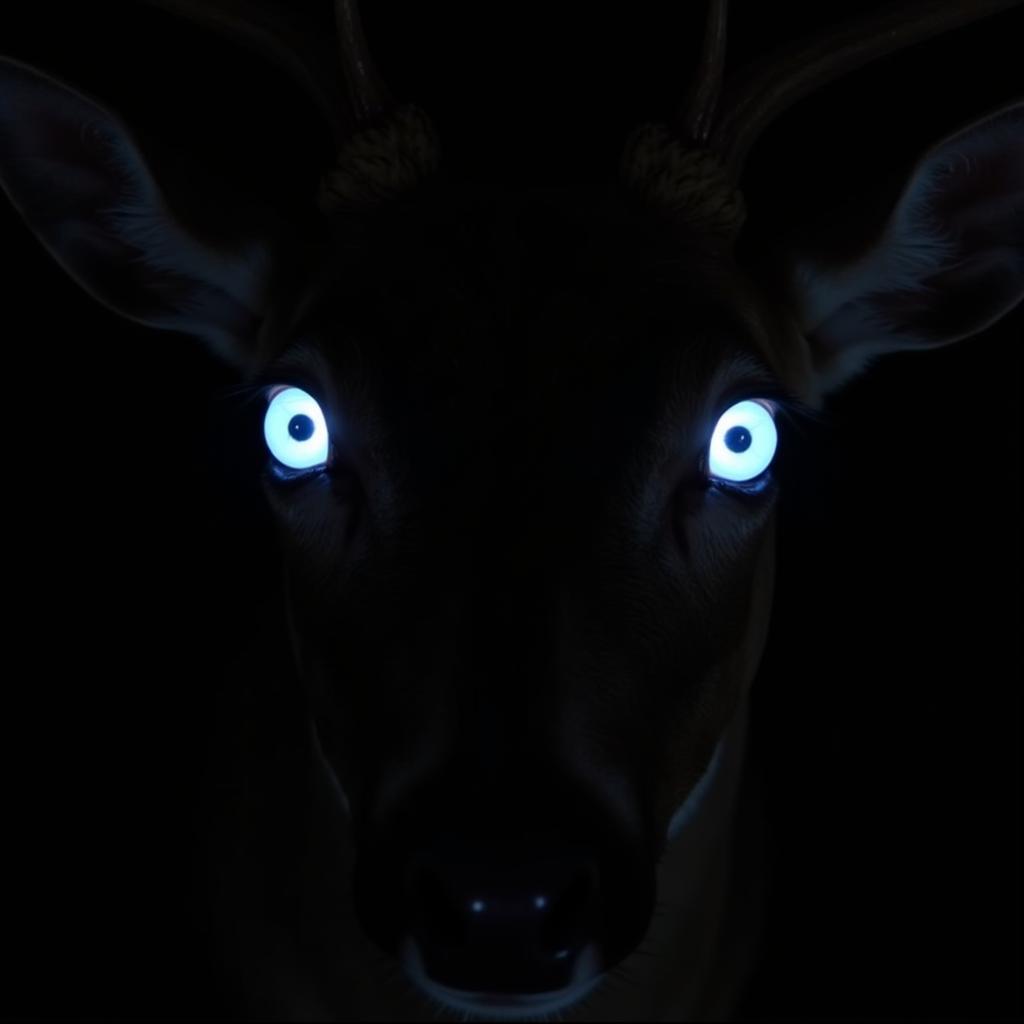Have you ever wondered what a deer sees in the pitch black of night? The question “what color are deer eyes at night” might have crossed your mind, especially if you’ve ever encountered their mesmerizing gaze in the headlights. While it may seem like their eyes glow an eerie color, the truth is a bit more nuanced. Let’s delve into the fascinating world of deer vision and unravel the secrets behind their nighttime gaze.
Dispelling the Myth of Glowing Eyes
Contrary to popular belief, deer eyes don’t actually glow in the dark. What you’re seeing is a phenomenon called “eyeshine,” a reflection of light back towards its source. This is caused by a special reflective layer behind the retina called the tapetum lucidum, which acts like a mirror, amplifying the available light and enhancing night vision.
 Deer Eyes Reflecting Light at Night
Deer Eyes Reflecting Light at Night
So, What Color Are Their Eyes at Night Then?
The color of the eyeshine you observe depends on several factors, including the angle of the light, the distance between you and the deer, and even the individual animal’s eye pigmentation. Most commonly, deer eyes reflect a bright, silvery-white light. However, depending on these factors, the eyeshine can also appear yellowish, greenish, or even reddish.
Seeing the World Differently: Deer Color Vision
Deer don’t perceive color in the same way humans do. Their vision is dichromatic, meaning they only possess two types of color receptors in their eyes, compared to the three types found in humans (trichromatic vision). While we can see a wide spectrum of colors, deer are primarily sensitive to shades of blue and yellow. This means they can distinguish between these colors and their variations, but reds and oranges appear duller, closer to shades of gray or brown.
 Deer Color Spectrum Compared to Human Vision
Deer Color Spectrum Compared to Human Vision
The Advantage of Night Vision: Enhanced Light Sensitivity
While their color vision might seem limited, deer compensate with exceptional night vision. The tapetum lucidum, responsible for the eyeshine, plays a crucial role in this. By reflecting light back through the retina, it gives the deer’s eyes a “second chance” to absorb light, allowing them to see much better in low-light conditions than humans or many other animals.
Adaptations for Survival: How Deer Use Their Vision
This enhanced night vision is essential for their survival. As primarily crepuscular animals, deer are most active at dawn and dusk, when light conditions are low. Their vision allows them to detect predators lurking in the shadows and navigate through dense vegetation with ease.
Beyond Color: Other Factors in Deer Perception
While we’ve focused on color, it’s important to remember that vision is more than just perceiving hues. Deer also rely heavily on other visual cues, such as movement and depth perception, to navigate their environment. They have a wider field of view than humans, allowing them to detect motion on the periphery. However, their ability to judge distances is not as sharp, which can sometimes lead them to misjudge the speed and proximity of oncoming vehicles.
Conclusion: A Glimpse into the World of Deer Vision
So, while we can’t definitively say deer eyes are a specific color at night, understanding the science behind eyeshine and their unique visual system gives us valuable insight into their nocturnal behavior and adaptations. Their eyes, reflecting light like shimmering orbs in the darkness, are a testament to the wonders of nature and the diverse ways animals perceive the world around them.
If you want to learn more about how deer perceive the world, check out our articles on what color can deer not see and what colors can deer see best. Understanding their visual limitations can be crucial for hunters and nature enthusiasts alike.
